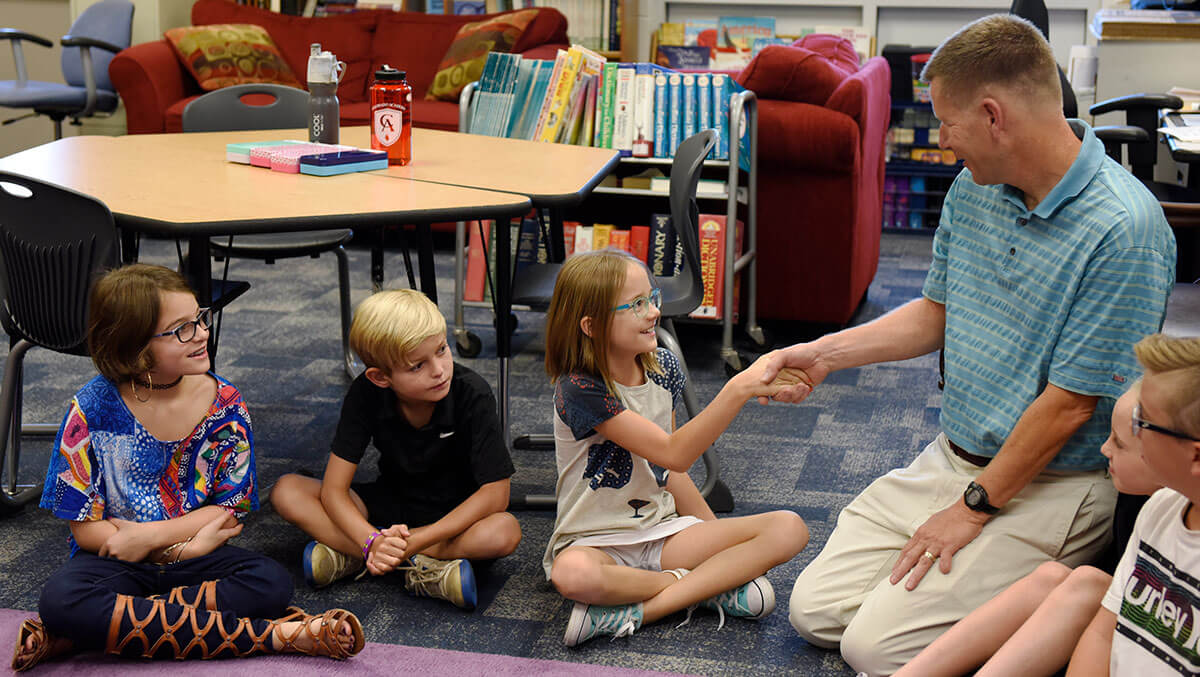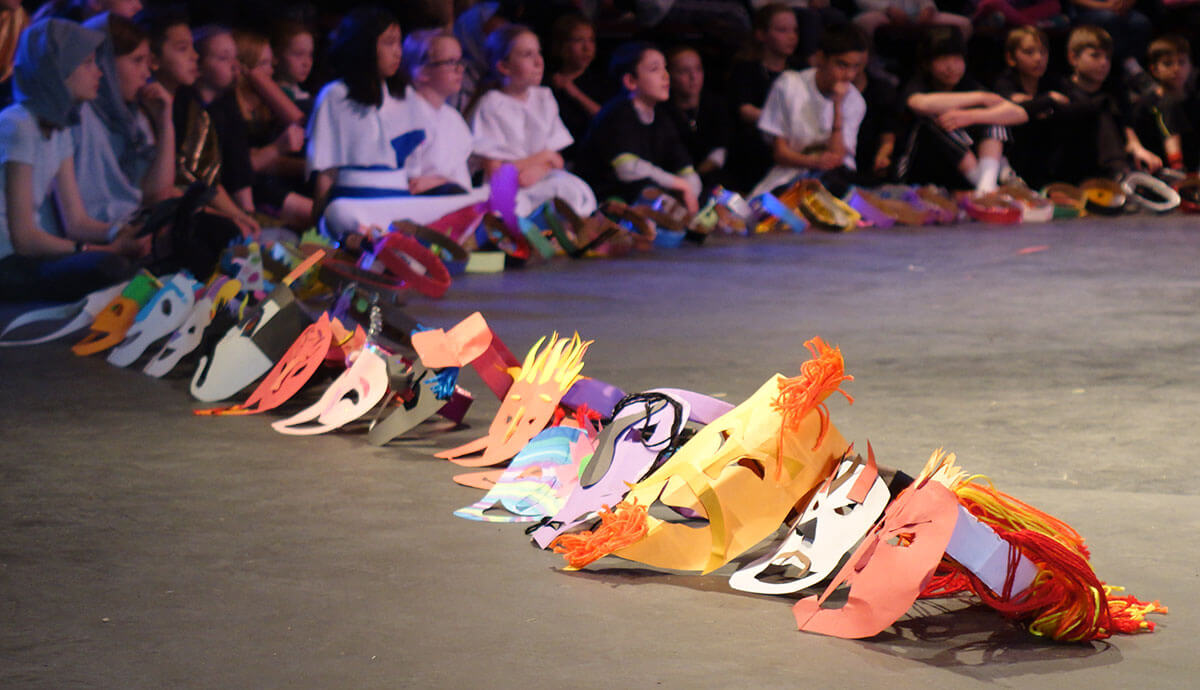As I looked at my calendar this week, I saw that it was a perfect glimpse into the many ways our students from Pre-Kindergarten through Grade 5 live the mission and values of CA every day. From the principal’s perspective, here are the stories behind actual calendar entries providing insight into the rich experiences and opportunities Lower School students have.
Monday—Cross-age Collaboration. The morning began with a visit to the Pre-K Cottage to see Mrs. Stone’s third graders and their Pre-K buddies do a design/thinking challenge together. The room was strewn with cardboard and tape, and the air was filled with excited anticipation. The third graders listened to the younger students explain their plans, gave them feedback, and helped them build their Leprechaun houses. “The third graders were so sweet and amazing as they helped their buddies bring their ideas on paper to life,” says third grade teacher Stephanie Stone. “This is such a good modeling of the cross-grade collaboration we encourage at CA.” Although process was as important as the product, there was no denying that the emerald city these students created was wondrous.
Later in the morning, a third, fourth, and fifth grader sat on a student panel alongside Middle School and Upper School students fielding questions from members of our Board of Trustees. This opportunity, open to students in all three divisions, was an amazing demonstration of how comfortable our students are interacting with older and younger students and describing their CA experiences. When a senior described a certain amount of trepidation about leaving the familiarity of CA to begin his college experience, a fifth-grader chimed in with his own concerns about moving from Lower School to sixth grade. The third grader who described her experience of coming to CA one year ago was as articulate as the eighth grader who described her entry into Middle School. Both girls agreed that everyone welcomed them and helped them feel at ease even before the school year started. I think the trustees were as captivated by the empathy and sharing between students as they were by their actual responses.
Tuesday—Growth-filled Academics. My mailbox was filled with letters written by students in Mrs. Owens’ third grade Writers Workshop. They had just finished a unit on persuasive writing, and they were passionate as they presented their cases, arguing for less litter on campus and more Big Blue Blocks. Just as impressive as their strong voices were the powerful writing strategies they used. They used a question as a “hook” in the beginning, told personal stories to prove the point, gave specific examples, and talked directly to the reader to strengthen their arguments. Their writing of these 9-year-olds was organized, included transitions, and followed correct conventions of spelling and punctuation. And, yes, we will be adding to our block collection and policing litter on the recess field!
Wednesday—Community and Belonging. My opening message at our monthly Lower School Town Meeting began with an activity adapted from Responsive Classroom. To get a sense of how our youngest students were feeling at school, I asked them (and their teachers) to stand if they agreed with these statements as I read them:
“You looked forward to coming to school this morning.”
“You feel respected and understood by your teachers and colleagues.”
“Someone at school has done something kind for you this week.”
“You know that the choices you make matter to all the people around you.”
Their agreement was strong, nearly unanimous. While this was by no means scientific, it was a visible sign that Lower School students and teachers affirm their and our strong sense of community and belonging here at CA. This matters because a warm and inclusive school climate is a strong indicator of a healthy school. I closed my remarks by saying, “We are a great school because we care about each other and we show it. As you go through the rest of your week, I want you to think about this whenever you have a choice to act and remember that it’s each one of us showing our kindness, caring, and respect that make our Lower School so special.”

In the weeks following the recent tragic events in Florida, Lower School Counselor Kate O’Donnell visited classrooms to talk with students and answer their questions about safety at school. In developmentally appropriate language, Kate’s message to them was that the adults at school will keep them physically safe, and they can help keep themselves emotionally safe by being kind and respectful to each other.
Thursday—Artistic Opportunities. Last Thursday, fourth and fifth graders presented their original dances and musical compositions in the theater. These performances were the culmination of a trimester of collaborative work with classmates during music classes. Fifth graders even created their own Greek theater masks to dramatize their characters. The Orff-Schulwerk approach encourages musicianship and expression through movement in every student and promotes creativity, collaboration, and group problem solving. When they took their final bow, these students knew that they were the producers of art and makers of music.

Friday—Communication. We ended the week with Parent Conferences on Thursday and Friday. This time-honored ritual represents an important part of the home-school relationship. This is time set aside for parents and teachers to get to know one another better, for parents to share their hopes and concerns for their child, and for teachers to share their perspectives about a child’s progress and growth. In fourth and fifth grades, students lead their conference and reflect on their work, habits, and goals with the support of teachers and parents. A hallmark of Lower School is the ongoing dialogue and collaboration between adults on behalf of the development and well-being of children.
To the students, this was a fairly typical week. As school personnel and parents, we know this is the added value of a Pre-K through Grade 12 education at Colorado Academy. And on to next week . . .
